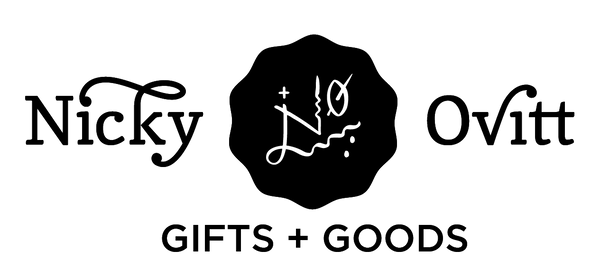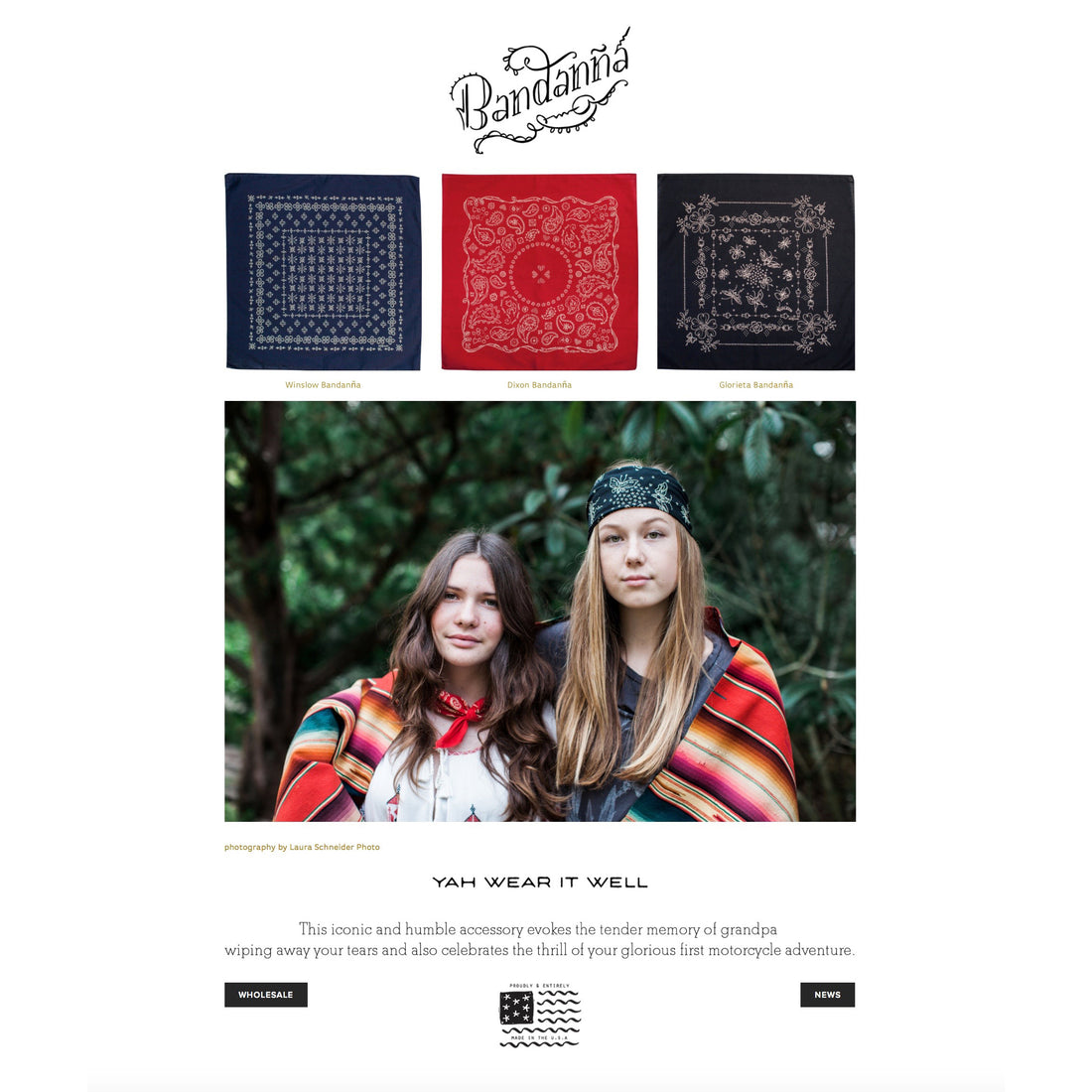Today I've officially launched my line of Bandanñas! As in previous years I'm doing this at exactly the rush time of year, in the middle of a gazillion other things. But the shop is NOW LIVE. It will be a work-in-progress as I add more photography from the fantastic lifestyle and product shoot this weekend with Laura Schneider Photo as well as more information about bandanas like the history below.
BANDANA HISTORY & MY STORY
Iconic and humble, the distinctive American printed bandana has it’s roots as a venue for political opinion, military propaganda, event commemoration, and brand advertisement. The origin of the word bandana is thought to come from the Hindi word 'bāṅdhnū' and in Urdu 'bāndhnū' meaning a tied, bound cloth. Kerchief comes from the French word couvre-chef, "cover the head." Bandanas are also synonymous with the indigo dying process that dates to around 4000 BCE.
The first bandana in America is believed to be George Washington’s likeness on horseback commissioned by his wife Martha. Soldiers went off to war with their possessions bundled in a cotton bandana imprinted with a sweetheart’s message. During WWII first-time working women like Rosie the Riveter tied their hair back with bandanas. The functional nature of bandanas made them popular with the working class. Cowboys, coal miners and railroad engineers very much depended on bandanas to keep dust out of their lungs, sweat from their eyes or in dire times as a tourniquet. Native Americans have worn bandanas since the early trading days. In the early twentieth century red bandanas were worn at union strikes and demonstrations signifying labor solidarity. In the 60s bandanas found new life as the counter culture accessory of musicians and motorcyclists. In the 70s and beyond bandanas have been used to signify gang identity and loyalty, and also as a means to convey sexual preferences within the gay community. For many of the world's devout peoples, head kerchiefs are worn as part of their religion, common among Orthodox Jews, Christians, Amish and Muslim women. In Japan, a hachimaki (鉢巻, "helmet-scarf") is a stylized headband usually made of red or white cloth, worn as a symbol of perseverance, effort, and/or courage for occasions such as women giving birth, students in "cram school," and expert tradesmen taking pride in their work. Today, luxury and lifestyle labels around the world like Hermès, Saint Laurent, Union Made Goods and Vans offer their take on the bandana trend making them popular with celebrities, sports figures and other influencers.
Whether called a bandana, kerchief, neckerchief, silk, scarf, hanky, or do-rag the useful square has a steadfast place in popular fashion and utilitarian service. Spelled correctly with one “n” or two, this versatile and recurring accessory trend has become a staple of the American wardrobe. The classic paisley bandana is an all-American-original with longevity that continues to find it’s way back into our hearts.
Click on images for links available. Left to right: Tsahizn Tseh, Apache Nation by Edward S. Curtis / jumpsuit woman / Actor Tom Mix / Casey DePaolo by Robb Kendrick / Actress Lucille Ball / Pittsburgh Miner by John Collier, 1942 / Musician Joe Strummer by Sho Kikuchi, 1982
>:<......>:<......>:<......>:<......>:<
My Bandanñas were inspired by my own vintage bandana collection. I’m attracted to the well-loved, weathered look of them, and relish the security of having my favorite accessory at hand to complement whatever the occasion. Matched with my background in fashion work for companies like Levi's, Bandanña is the perfect medium for my artwork. SPECS: high-quality 100% cotton Bandanñas are 21" square with a rolled hem with a vintage-cream discharge print of my interpretations of the three classic neckerchief designs. Each comes wrapped in a printed kraft paper belly band and includes a branded, usable postcard, a story card and a pin with a small piece of imitation coral for protection against the evil eye. Bandanñas are proudly and entirely made in the USA. Winslow, Dixon and Glorieta, each style is named for a town that has touched me in some way. And the tilde? A show of respect for my Latina heritage and the endless inspiration that comes from growing up in the American Southwest.







Left to right: Tsahizn Tseh, Apache Nation by Edward S. Curtis / jumpsuit woman / Actor Tom Mix / Casey DePaolo by Robb Kendrick / Actress Lucille Ball / Pittsburgh Miner by John Collier, 1942 / Musician Joe Strummer by Sho Kikuchi, 1982
>:<......>:<......>:<......>:<......>:<
Currently, Bandanña is sold at fine shops in Santa Fe and Corrales, New Mexico as well as B. St. Mercantile here in Petaluma, California.
If you're a retailer interested in carrying Bandanña in your distinctive shop please contact me using the button below.


